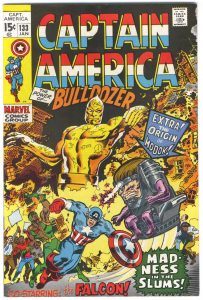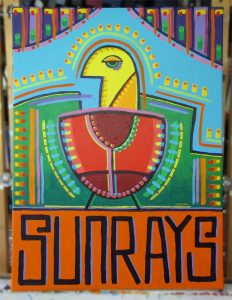I’m tired of writing about my art this week since that has been my year long task. Now I’m going to take a moment to write about some video games. I have no real reason for writing about them except that’s the subject that crossed my mind as I’ve been playing a few of them lately. These days I tend to play all of my video games on the iPad. I’ve owned enough videos game systems over the decades that I’d need at least two hands to count them all but since I bought my iPad 2 that has been what I primarily play on. I still have my X-Box hooked up and running but I mostly use that to watch TV with. It’s networked to my Mac and so I can play video files that on on my computer through my X-Box which is hooked up to my TV. Now I play games on the iPad while I watch TV via my X-Box.
My number one game for at least the last year has been one called “Subway Surfer”. It’s a game that falls into the “Endless Runner” category where you control a character that is constantly running. There is no stopping just jumping and dodging. I played a whole lot of different types of endless runners before settling on “Subway Surfer” as my favorite of them. “Temple Run” was the first of them and I played that one for a good long while. The main difference between the two games is that with “Temple Run” you tilt the iPad left and right to make the character turn while in “Subway Surfer” you swipe with your finger left or right to make your character turn. At first I enjoyed the tilting of the iPad but it soon got tedious. I prefer the swiping of my thumb these days. It’s a smaller and easier to make and control movement.
I must have played at least half a dozen different endless runners over the last year but none of them was better than “Subway Surfer”. One of the main reasons that I like it is that is stops speeding up after a certain point. With a lot of arcade style video games they have the same basic gameplay except they speed it up round by round until the game becomes impossible to play. “Subway Surfer” does speed up but not to the point of impossibility. I usually play the game for about ten minutes at a time but if I really wanted to I could go on and on with a single game. I played for half an hour straight late last week just because it was relaxing me. Games that speed up to the point of impossibility don’t relax me.
A game that I’ve been playing the last couple of weeks is a puzzle game called “Harmony”. It’s a fun little game where you move squares of different colors around the screen to try and get them to line up in a certain amount of moves. Though I like the game I find its attempts at making money rather crass. First off it’s a pay game. It only costs 99¢ which isn’t much but I still don’t expect pay games to want me to spend even more money. Especially since they want you to pay money for undoes and to skip levels. They want 99¢ for ten undoes and $5 to make the button to skip levels work. That’s crazy. Right now if I’m trying to figure out the puzzle and I make a mistake I have to start over. If I want the convenience of an undo I have to pay for them individually. I like the game but that’s insane. I’ll just start over thank you.
I’ve played a couple of other games this year that I’ve liked but were, to me, ultimately flawed. “One was Riptide GP2”, a racing game, and the other was “Block Fortress”, a tower defense strategy game. I liked both of them but ultimately there was a game mechanic I didn’t like. It’s a common game mechanic and it’s called “Leveling Up”. That’s when when play a game and as you go along you gain experience points and money and use that stuff to get bigger, stronger, and faster. That sounds okay but usually plays out in a boring way. At first you start out and you’re not strong enough. Then you manage to win a few hard fought races or battles, gain some points, and start to be competitive. After that the game is easy until you move up to the next level of competition. Then you’re starting out again not strong enough. Lather, rinse, repeat until bored. Like I said I enjoyed both of those games until I got bored having to compete in too many races that were too easy so I could gain points or races too hard until I leveled up.
A lot of “Endless Runners” are not games that you finish. You run for the sake of running. But not all of them are like that. I played one called “Rock Runners” that was fun. It’s basically a side-scroller except you can’t stop your character. He keeps on running. You run and jump and avoid obstacles and clear levels. That’s how it’s like a typical side-scroller. You run through a whole level and that level is cleared and over. I had enough fun with this one that I played it until the end. I cleared all the level there were to clear. Fun game.
One final game of note is another “Endless Runner” called “Ski Safari”. Like “Rock Runners” it’s a side scroller except there are no levels to clear. You just keep going as long as you can. Except that unlike “Subway Surfer” where you can play forever as long as you don’t screw up in “Ski Safari” all of your little mistakes add up after a while and a giant avalanche comes from behind and gets you. It’s not quite the “Speeds up until it’s not humanly possible to play” model but close. It’s not humanly possible to play it as perfectly as you would need to in order to continue. But still it’s a fun game. There are a lot of different boards, settings, characters, and power-ups to keep things interesting and I still dig this one out when I get tired of the zen of subway surfing.
I have to mention one other game that I spent a dollar on. It was a game where you guide a ball down a winding track by tilting the iPad from side to side. The game is called “Impossible” and for me it was just that. I could make two or three turns before the ball would fall off the track. I was really bad at it and don’t play it much. I guess I should have payed attention to the name.














